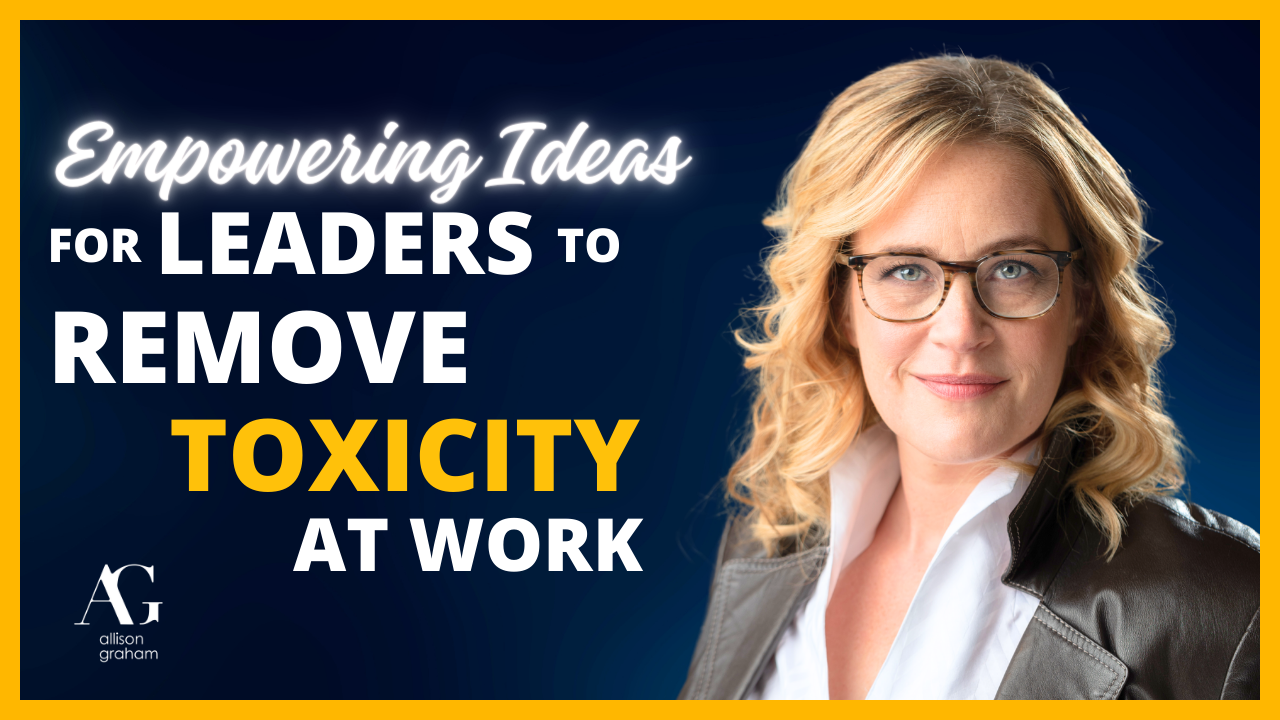In today’s fast-paced, high-pressure work environment, even top-performing teams can easily lose their optimism and accidentally slip into toxicity. You’re not alone if you’ve noticed an uptick in stress leaves, absenteeism, and disengagement because of box-checking, politicking, tear-inducing behaviours.
While it can be a frustrating process to transform a workplace culture, it is possible to proactively resolve these problems before they become so ingrained in the team’s dynamics that there is no way back to an enjoyable, high-functioning workplace.
I believe that 98% of leaders do not want their employees (or themselves) to be miserable at work. (This article is not for the 2%)
Since human dynamics are involved, toxicity can happen anywhere – even to the best-intentioned people. If you’re leading a culture that needs a massive reset or are concerned that negativity is brewing, please know this. It is not one person’s fault. I invite you to consider the cycle that leads to toxicity.
- Negativity starts small and spreads.
- A way-too-busy leader turns a blind eye to a red flag here.
- Ignores another red flag there.
- Next thing you know, a team that was once optimistic is uncharacteristically pessimistic.
- People quit or go on stress leaves.
- Those left behind feel more pressure.
- Resentment builds.
- Toxicity intensifies.
- It feels overwhelming.
- And the cycle repeats.
My observation is that the difference between successful and unsuccessful leaders when it comes to inspiring an engaged, productive workplace, is that successful leaders interrupt negative patterns early to stop the downhill trajectory. They don’t turn a blind eye to the warning signs that their company’s vibe is shifting for the worse.

Toxic workplace behaviours will not be resolved by leaders ignoring the issues and hoping they go away.
Despite wanting a more harmonious workplace, I see why some leaders turn a blind eye to the toxic behaviours that are happening in their hallways.
Among the reasons I’ve observed leaders will ignore the escalating negativity include:
- They are too busy putting out fires and keeping the lights on to worry about the kumbaya of the workday.
- They’ve tried to fix negative dynamics in the past. Changes lasted for a few weeks, then returned to normal.
- In some cases, it’s their top producers who are mostly to blame, and they don’t want to risk the top-line results by having the tough conversations.
- They think talent is easy to come by. If a person is unhappy working for them, they should leave. Everyone is replaceable.
- They learned early that a bit of negative edge on a team is an effective way to run a tight ship and think productivity will dip if people are too happy at work.
- They believe employees need to suck it up and be grateful for their jobs. It’s up to them to ignore internal politics.
- They are oblivious that their own patterns are contributing to the negativity.
- The leaders are just too exhausted, burned out, and pessimistic themselves to even imagine how they would inspire their employees to get out of their funk too.
While I empathize with the excuses, these reasons don’t make it okay to enable a toxic working environment – especially when there are so many ways to stop the downhill spiral of negativity.
Typically, resetting an organization’s vibe requires an outsider’s perspective. That’s one of the reasons why my industry is booming as resilience experts with different angles are stepping up to consult, speak at conferences, and offer training programs – myself included.

The benefits of leading a harmonious workplace free of political angst, far outweigh the time and financial resources required to make it happen.
People spend way too much of their life at work to be miserable. Of course, a reasonable amount of interpersonal friction is a natural part of working with others.
In addition to the above realities, there’s a more significant reason leaders may not want to dive deep into fixing toxic cultures. It’s pride, or you can call it ego, but whatever you call it, it’s undeniable.
One of the most powerful motivators in human behaviour is the need to save face. It’s hard to accept responsibility for failures. It can be embarrassing for the person at the helm to admit that they turned a blind eye and missed the warning signs.
Ultimately, executives need to swallow their pride, gain objectivity about what’s truly happening in the ranks of their organization, and take appropriate steps to inspire the kind of workplace culture they want for the future. The first step is up to the leadership, but when leaders step up, the employees also need to be willing to shift gears.
If they don’t participate to make a more positive culture viable, then it’ll just be more finger pointing and nothing will change.
I am strongly optimistic that leaders who are willing, can either avoid the slide or turn the tide of negativity within their organization. I believe it’s possible because I’ve seen the transformation that happens when leaders realize what they need to do to inspire a respectful workplace.







